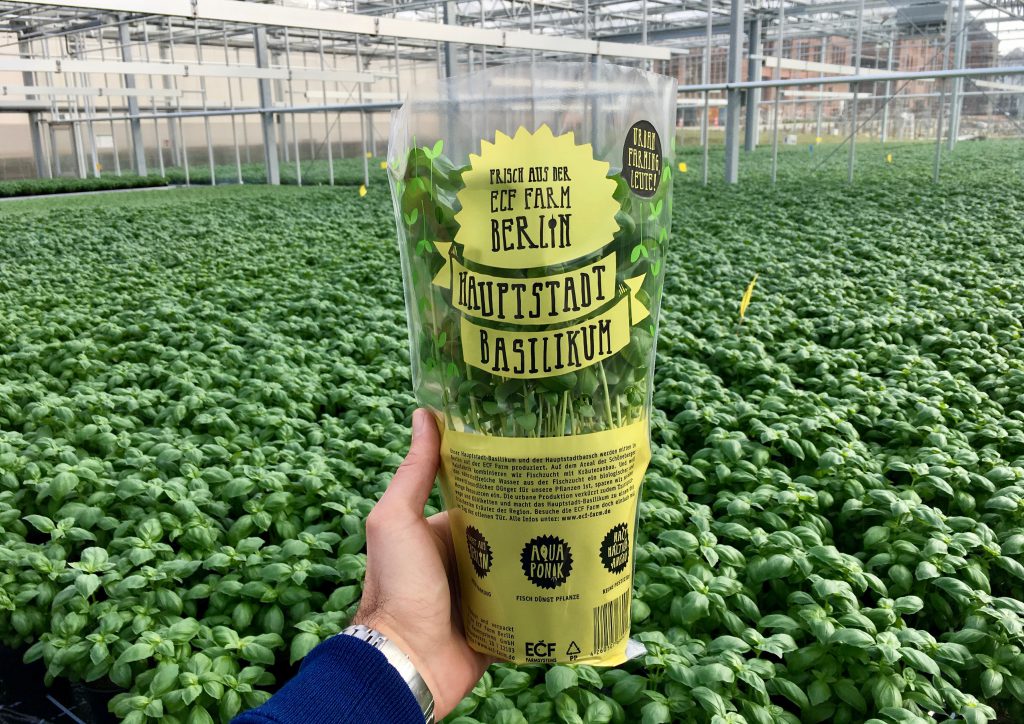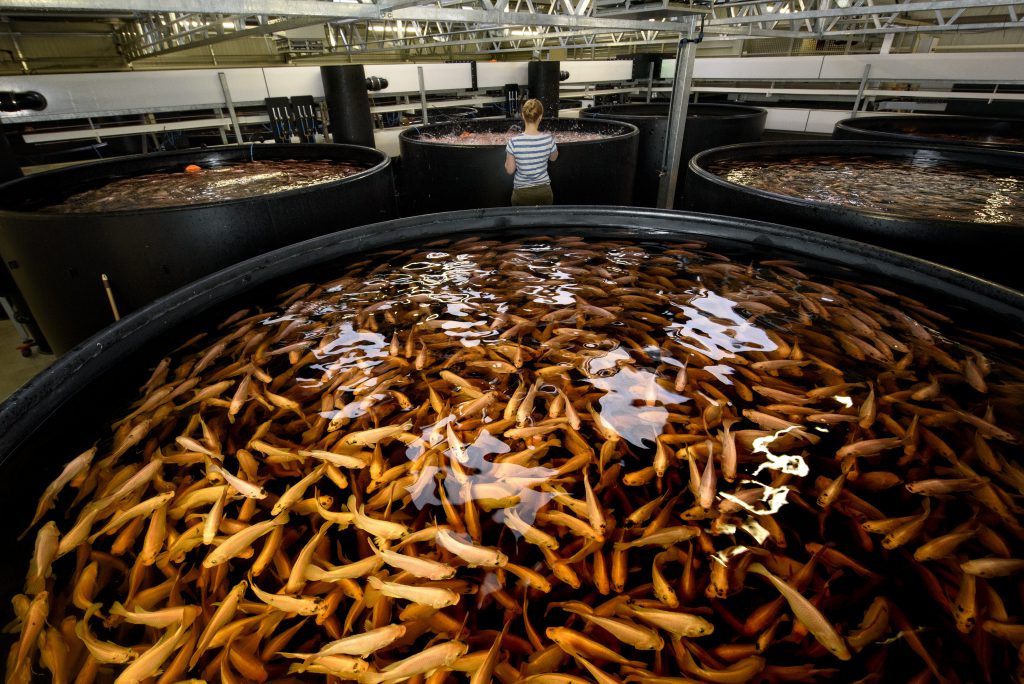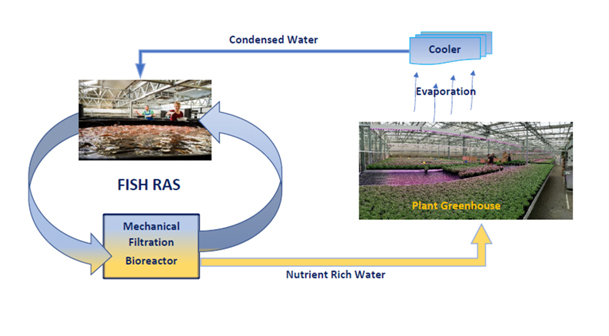
Aquaponic stands for a combination of a conventional AQUAculturefor fish or other aquatic animals and hydroPONICfor the – mostly soilless – cultivationof plants.
The idea is to use the nitrogen that is excreted by the fish as fertilizer for the plants. In the simpler systems this is done as a single recirculation aquaponic system. In comparison to a typical recirculation aquaculture system (=RAS) where the biofilter has the function to convert the ammonia nitrogen in two steps to nitrite and nitrate, in the hydroponic section this role will be taken over by the plants. During the passage through the plant roots, most of the excreted ammonia is converted by bacteria into nitrate that is then consumed by plants. The so cleaned water can be directly launchedback to the fish tanks.

Such systems are widely used in small scale e.g. in backyard production system for home grown fish and vegetables but also some professional farms. The fish species that is highly suitable for aquaponics is Tilapia. Besides it is very robust it can also be fed on a vegetarian diet. As plants lettuce, herbs, tomatoes and cucumber are the favorite species.
Although these simple aquaponics can improved the sustainability of aquaculture activities but yet there has not been a major commercial breakthrough for this kind of culture system.
There are some disadvantages, that do not allow optimum production for both fish and plants in such systems. First, all fish and also the aerobic bacteria specialized on nitrification, e.g. the genera Nitrobacterand Nitrosomonas, have a pH optimum of 7.5 to 8.5,whereas most hydroponic plant speciesusually prefer low pH levels between 5.0 and 6.0. Thereforeat least one of the species in the system is inhibited in its growth potential. Second thenutrient concentrations such as nitrate in the effluents from the fish tanks are relatively low. If accumulated to higher concentration to serve the plants needs the fish may already suffer chronically from such concentrations and growth can be retarded.
This is why in these aquaponic farms plants with lower nutrientrequirements such as lettuces and herbs are grown.

A more promising concept is to use a complete fish RAS including a bioreactor for nitrification and connect it by aone-way connection with the plant production unit. The water from the RAS is pumped into tanks were the nutrients are topped up to the optimal mixturefor the plant and from there delivered to fill up the plant troughs and tables. No water is pumped back to the fish production unit. To regain part of the water from plant production in the greenhouse the water that is evaporated from the plant leavesis trappedin cooling systems and collected as condensed water. This water has almost the quality of distilled water and can be used to top up water losses in the fish RAS.
WE offer our know-how to design a tailor-made fish recirculation aquaculture system as basis for a aquaponic farm complex. Our farm concepts are not only for Tilapia but can also be stocked with more valuable species such as hybrid striped bass or barramundi.
The experts for the plant production using the nutrient film techniques in troughs or on tables are ECF Farmsystems GmbH in Berlin. They provide the greenhouse systems and the general lay-out to match fish and plant production in an optimal way.